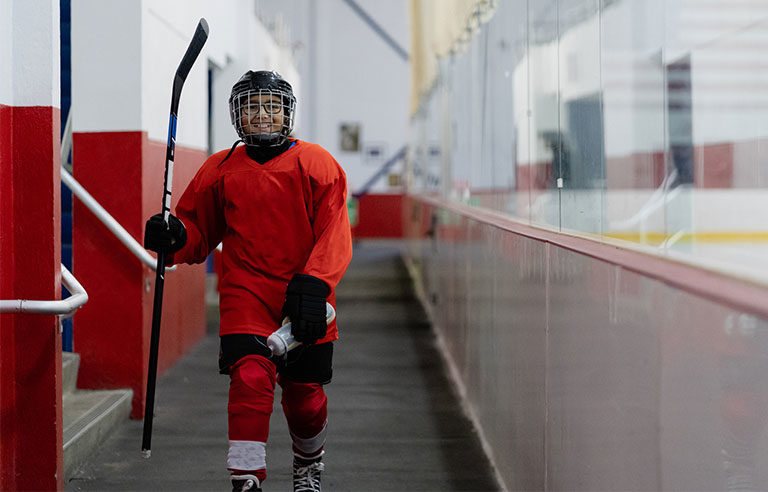Know the risks of youth hockey

With its nearly nonstop action, it’s no wonder some kids clamor to play hockey. But the sport has its risks, and injuries aren’t uncommon.
KidsHealth.org states that even “no-check” leagues (“checking” is when a player purposefully collides with another player to stop his or her momentum) feature a lot of player-to-player contact, falls and collisions. Kids are also at risk of being hit by hockey sticks and flying pucks, and experiencing muscle sprains and strains. So what can you do to keep your young hockey player safe?
For starters, it’s important to wear the right gear. KidsHealth.org recommends hockey players wear helmets; properly fitting skates; shoulder, elbow, shin and knee pads; gloves; a neck protector; and a mouth guard.
Kids also needs to understand the importance of following the rules and treating the hockey stick as a piece of equipment, not a weapon. If your child’s team allows checking, make sure they know the difference between a legal check and an illegal one, KidsHealth.org says. A player never should be checked from behind, and play should be supervised by an adult.
Post a comment to this article
Safety+Health welcomes comments that promote respectful dialogue. Please stay on topic. Comments that contain personal attacks, profanity or abusive language – or those aggressively promoting products or services – will be removed. We reserve the right to determine which comments violate our comment policy. (Anonymous comments are welcome; merely skip the “name” field in the comment box. An email address is required but will not be included with your comment.)
